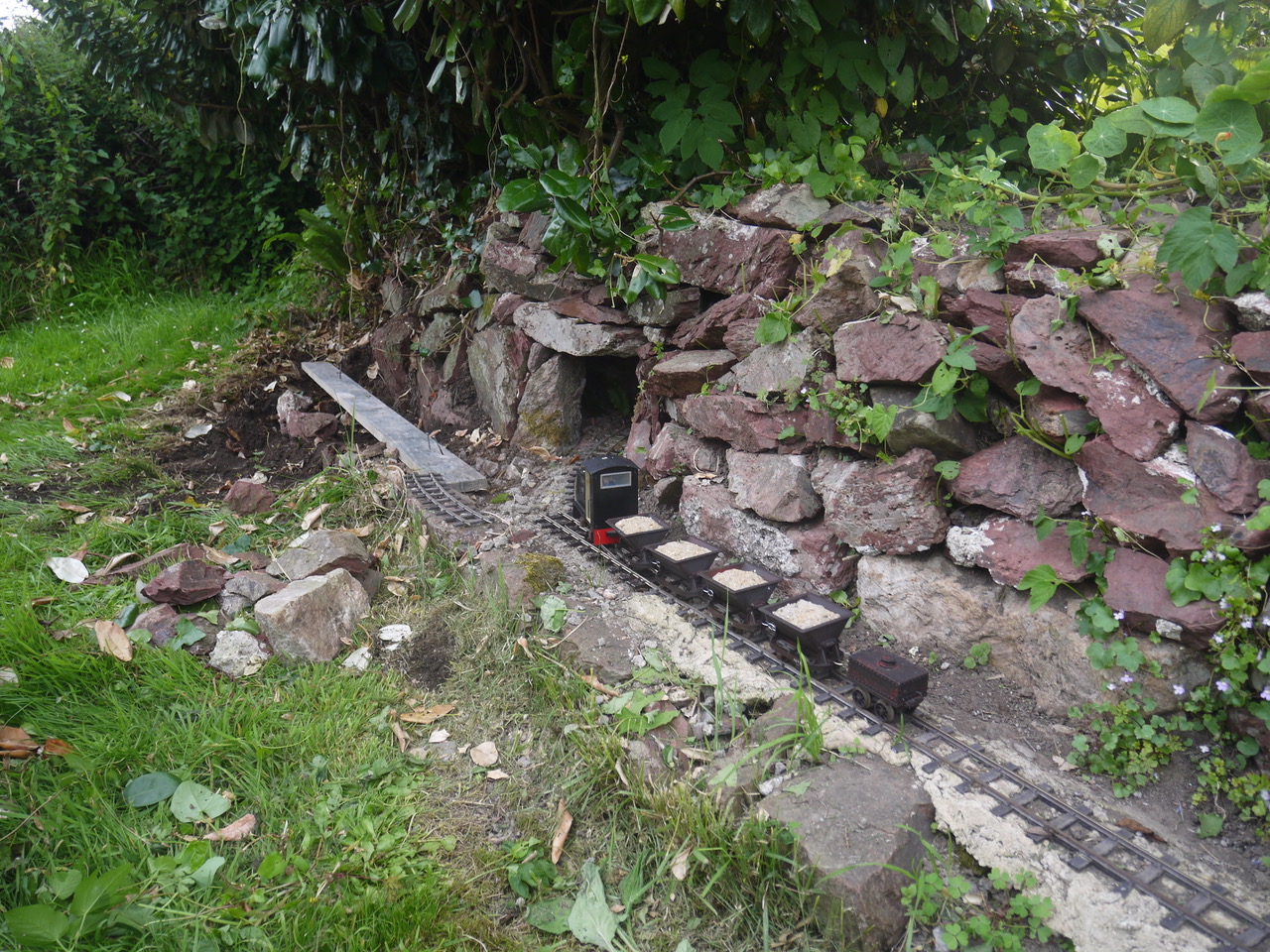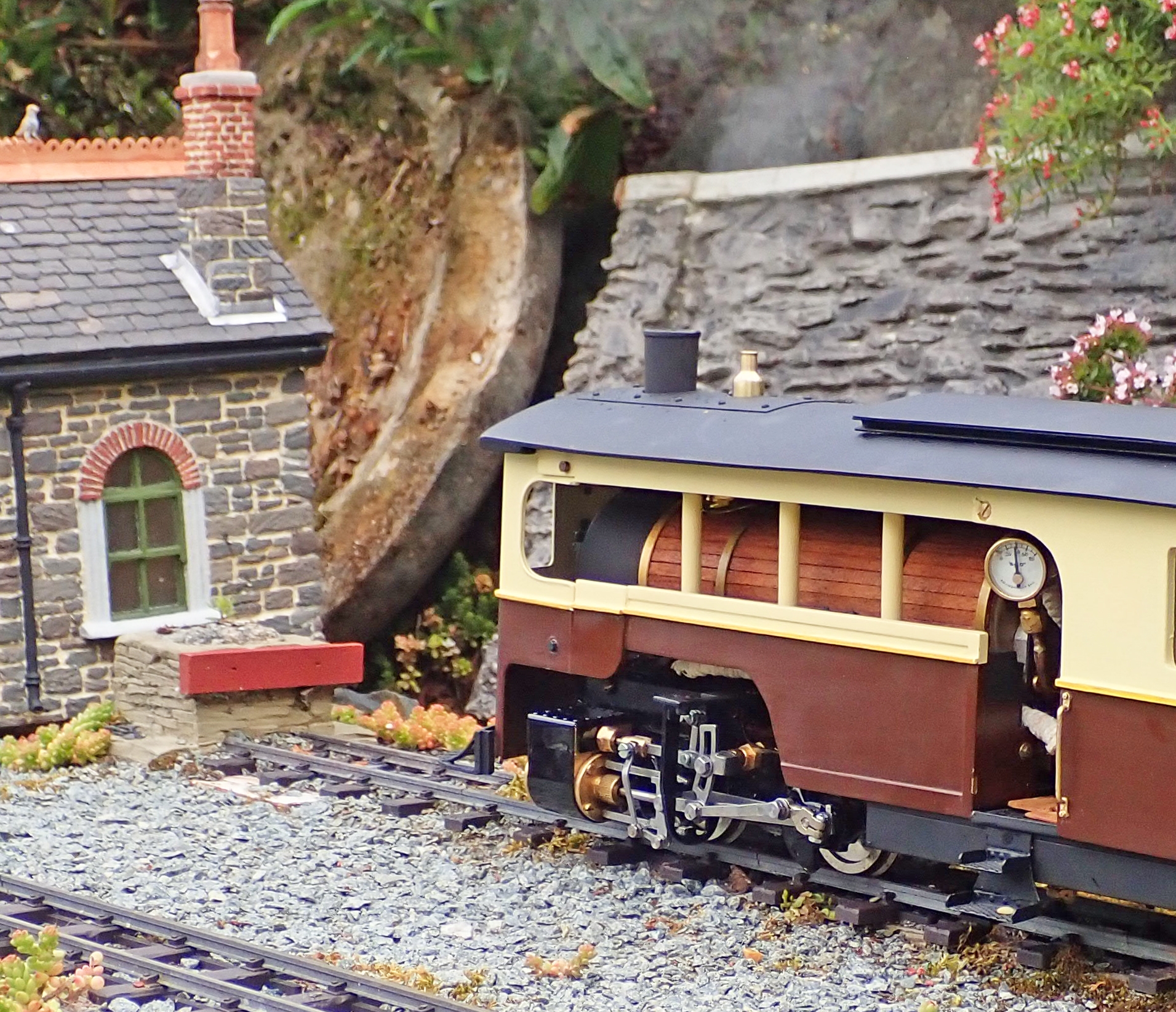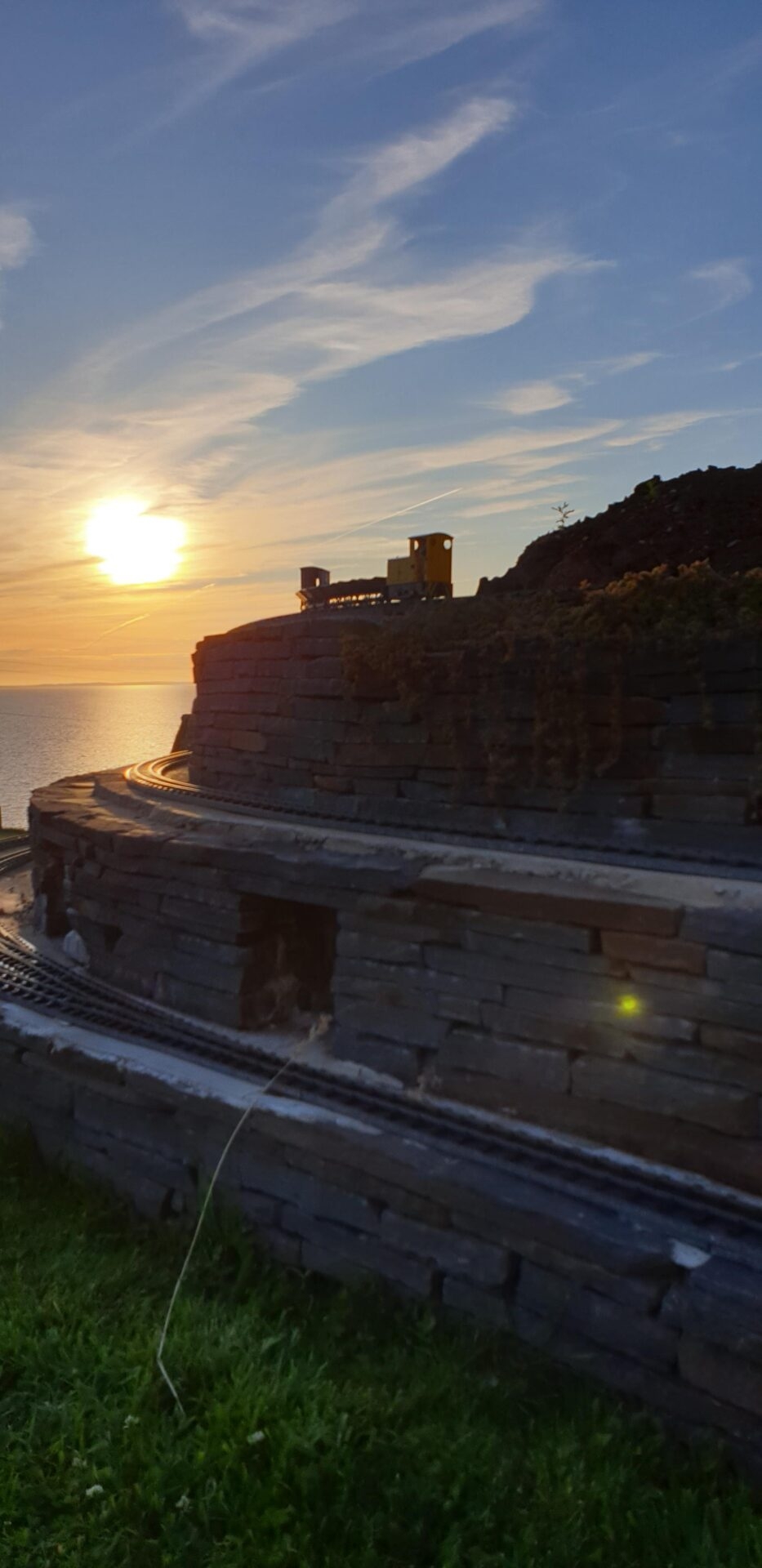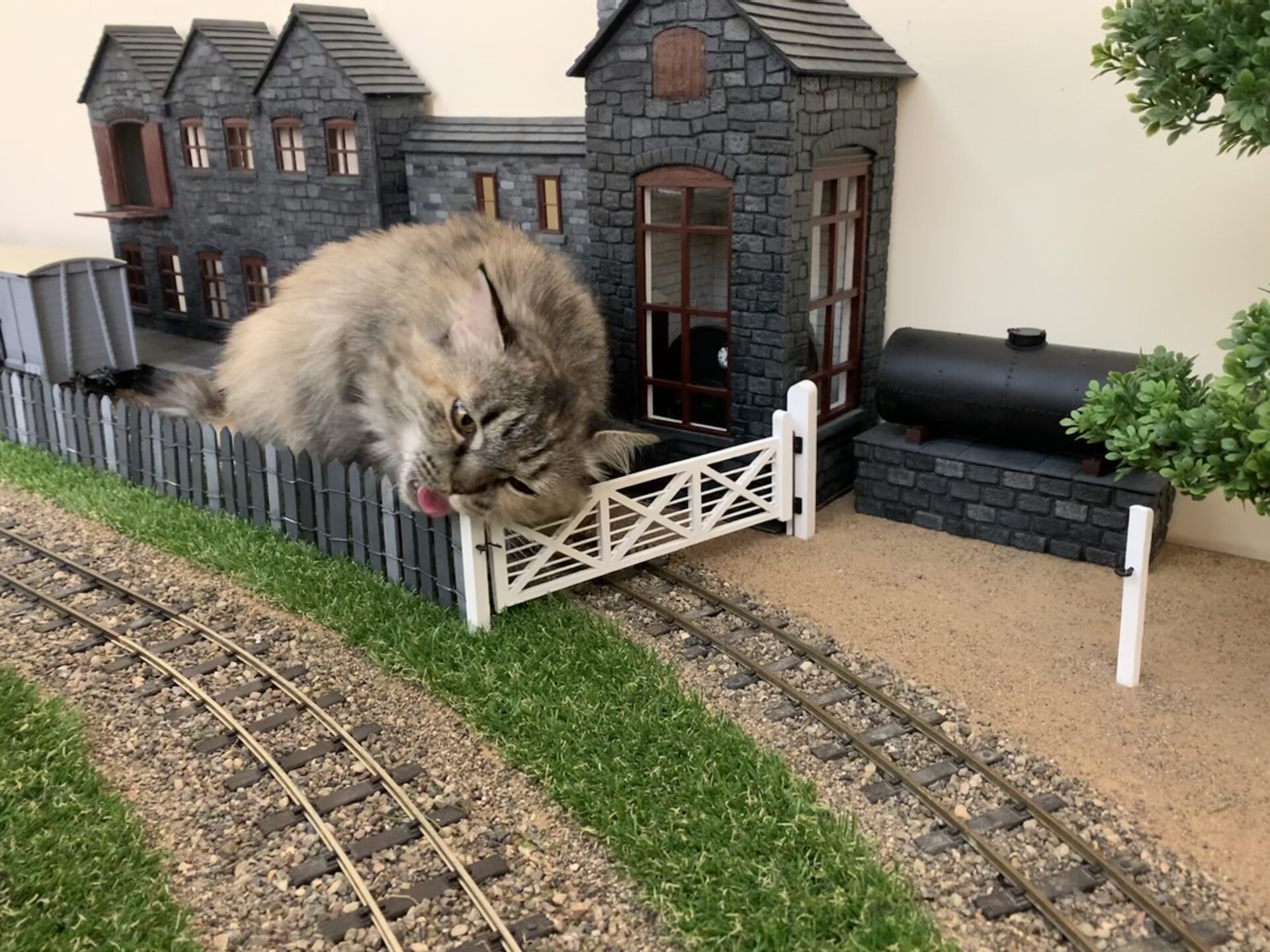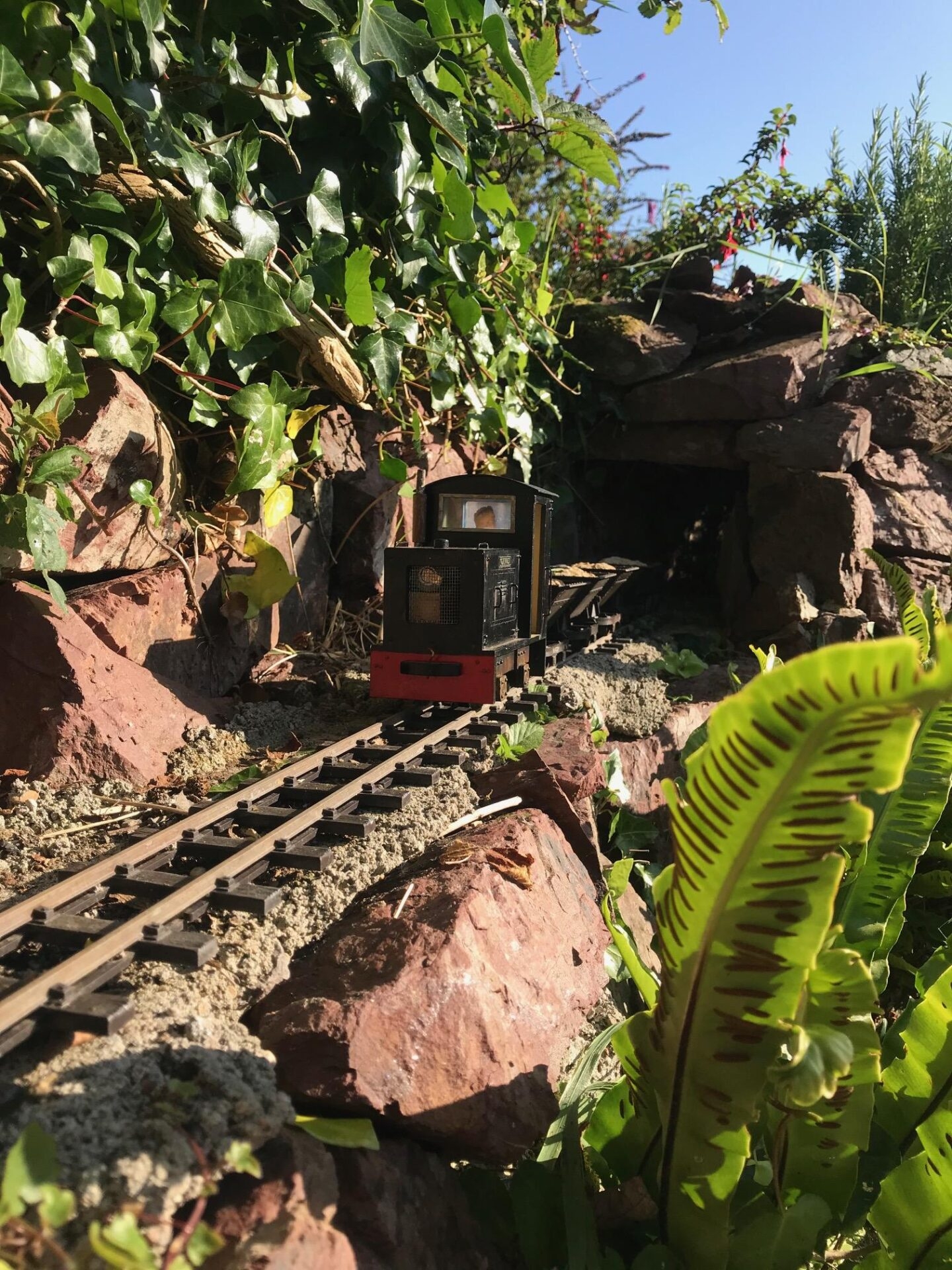Today’s project was to be a new siding – in fact, the start of the ‘phase 3’ large loop, but a handy siding for now. At the minute, when running multiple trains, if a new train comes out onto the loop from the shed, there’s nowhere to pass the old train, but I will be able to tuck it away in this siding.
This is how things looked just after 6 o’clock. The day had got away from me – was it still worth making a start? I had a stern word with myself, and after a bit of hard negotiating, promised myself a beer if I got it finished.
Just before 7 the first train ran through the new points. The new siding itself will be a very makeshift affair for now – two lengths of recycled track on a plank. When it becomes the mainline of the large loop it will be laid properly on 18mm ecoply. For now this will do.
A little over an hour after starting, the first train runs into the new siding. These are the ‘after’ pictures taken from roughly the same spot as the ‘before’ pictures at the top of the post.
Time for that beer!
Simon (Moel Rhos)



